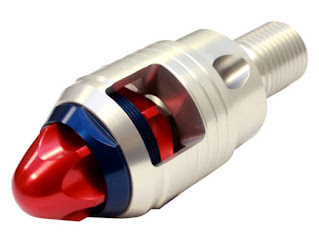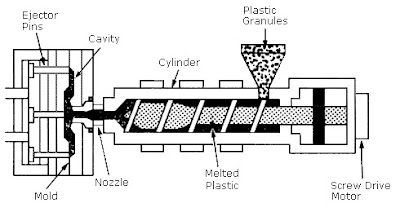Industrial-grade screw and barrel wear cuts throughput speeds, producing scrap before shutting down. For the first time, technology is making progress in unraveling the mystery of screw and barrel wear.
There has been a lot of injection molding machine innovation in the past year. And now, Glycon Corp. has the technology to test wear within the plasticating device. Glycon is in the first phase of rolling this technology out in the industry. It will concentrate on extrusion and blow molding.
With this capability, they have developed the technology to calculate the rate of wear and predict future wear. This data determines the most cost-effective time to replace these components.
Glycon has been working on measuring wear since 1986 gained their first patent as Great Lakes Feedscrews. The company expanded the invention to include measuring barrel wear and was awarded additional patents in 2006, 2007, 2008, and 2019.
Wear and tear challenges are well documented over the years, and plastic processors know the symptoms. Many machine operators compensate by making changes to the screw speed or temperature settings. The problem is, both of these changes would ultimately result in lower efficiency and higher scrap rates.
The new system called EMT (short for Electronic Measurement and Tracking), includes Glycon's flite-scan eddy-current sensors mounted in one or more positions within a SmartBarrel. These barrels also have SmartPorts, another innovative technology offered by Glycon.
Measurements will be conducted routinely at the processor's plant by field technicians using a Flite-Scan sensor. Several eddy-current sensors were tried over the years. Multiple sensor manufacturers were collaborated with, but all ran into failure at high temperatures in the plasticating units.
Micro-Epsilon, a leading manufacturer of sensors that measure displacement, distance, position, vibration, dimension and thickness, was the eventual choice because their sensors proved much more robust and provided reliable readings up to 600 F.
The EMT system is not only to analyze the data to determine the optimum time to replace or repair worn screws or barrels to optimize productivity but also to relate the wear to:
- Materials of screw/barrel construction.
- Screw/barrel alignment.
- Polymers being processed.
- Impact of abrasive fillers.
- Performance related to wear, including production rates, cycle times, energy consumption, melting rates, head pressures and melt temperatures.
The Glycon EMT system's advantages are that it provides precise measurement of the wear on the OD of the feedscrew and the barrel's ID and its simplicity and cost-effectiveness. It allows maintenance personnel to plan to measure intervals and to schedule changeouts at convenient times based upon wear-rate data rather than 'running to failure' and having to run inefficiently or not at all.
For more information about the new Glycon technology in New England and Upstate New York, contact AP Corp. Call them at (508) 351-6200 or visit their website at https://a-pcorp.com.





